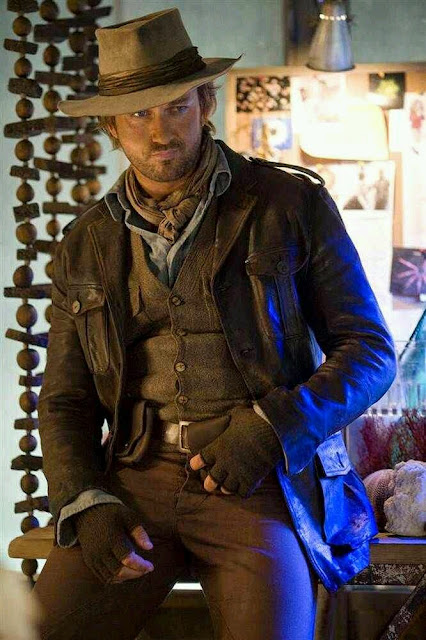Moreso than any decade before or after, the 1990s led comic book fans astray, left in the lurch, or feeling like they'd been had...did we want comic books with covers that looked like decorative notebook stickers designed by Lisa Frank? They sure looked pretty, especially with a big " #1" stamped in bold on the cover. It was hard to tell if anybody was actually thinking about reading this stuff, more preoccupied with hoping they could flip it. But the comic shops and publishers aren't hoping you get rich, are they? It felt like a Hobson's choice: read the stuff you like that the others don't care about, or collect the stuff you don't care about because that's what everyone else is talking about...and assume you can flip it in the near future.
And the cover prices were going up. This "hobby" - a word not often used anymore to describe comic collecting/reading - will no longer be casual spending.
I was still following the Disney Comics. The Disney company took back the character license from Bruce Hamilton to try self-publishing, which seemed logical, until they crashed and burned, too dependant on questionable marketing research. The survivor was Disney Adventures Magazine, a small digest that lasted the early-2000s like a little engine that could, running on moss-covered track. Hamilton got the license back in 1993, in time to serialize Don Rosa's magnum opus, The Life And Times Of Scrooge McDuck, in issues of Uncle Scrooge. To date, the Disney ducks ( and mice ) have been carried by six different publishers within the last 25 years and endured.
Other surprises that survived the 90s were Bongo Comics, founded by Simpsons creator Matt Groening to publish Simpsons ( and later, Futurama ) comic books. Upon acquiring the Hanna-Barbara characters, DC Comics' Scooby-Doo comic remains in print, alongside Looney Tunes as part of their "kid-friendly" line.
Marvel's Ren and Stimpy was "kid-friendly" because it's writer, Dan Slott, wasn't allowed to write fart and booger jokes...so, in my humble opinion, the book required actual, disciplined comedic wit (for the time that Slott was writing it, anyway) that outclassed the cartoons. The issue guest-starring Spider-Man ( Slott's first time writing the character ) is a classic farce. I still remember the scene where Spidey suggests substituting powdered toast flakes with spider-silk on Ren and Stimpy's toast for breakfast...I imagine that would taste better than the Spider-Man tie-in breakfast cereals offered in the real world.
Speaking of an incarnation from a different medium outclassing the source material, Batman: The Animated Series was the best take on Batman offered, and a tie-in comic book series, The Batman Adventures, didn't lose anything in translation. Mad Love was a one-shot "special" issue, featuring story and art by the best-known of the TV series' creators, Paul Dini and Bruce Timm. I didn't get a chance to read it until around 1998, when it was reprinted with that magnificent painted cover as a "prestige format" trade paperback graphic novel. Mad Love was the best Batman comic of the 90s.
What would eventually be referred to as "The Timmverse" could also be found in Superman Adventures. The best issues were when Mark Miller was writing the book, offering an uncharacteristicly light approach compared to his better-known efforts on The Authority, Wanted and Kick-Ass. This issue featured a team-up with Batgirl to save a kidnapped Bruce Wayne from The Mad Hatter, in a plot reminiscent of the Superman: The Animated Series episode, "Knight Time". Cool art by Mike Manley.
I had no knowledge of what transpired in Spider-Man comics between his meeting Ren & Stimpy and his wife Mary Jane's miscarriage ( a low down, nasty moment that would foreshadow other, cheap and nasty moments in the future of Spider-Man comics ), but I was enjoyed the Saban-produced, Spider-Man cartoon on FOX saturday mornings, so I picked up this particular issue of Spectacular Spider-Man, part 1 of the 3-part "Goblins At The Gate", which featured the original Green Goblin against the original Hobgoblin, who was my favorite of the 90s cartoon villains featured on the show, thanks to the inspired notion of casting Mark Hamill as the voice of the character and using his Joker voice from Batman: The Animated Series. The arc was also plotted by Roger Stern, who is considered one of the top 2 best Spider-Man writers ( the other being Stan Lee, of course ), so the those 3 issues had more snap than a lot of Spider-Man comics offered in the late-90s. At the time, my knowledge of Goblin continuity/history could fill the back of one or two trading cards, so I was surprised to see that Norman Osborn was back from the dead, or that there was more than one Hobgoblin, but I caught the reference to a once-trendy obscure 90's TV movie called Barbarians At The Gate. This arc was also a follow-up to Stern's Hobgoblin Lives mini-series, so I read that next, then continued reading more until I was up to date...the goblins are the Yosemite Sam and Elmer Fudd of Spidey's rogues gallery, anyway ( with Wile E. Coyote as Doctor Octopus ) to Spidey's Bugs Bunny...and realizing that it felt like nobody at Marvel particularly liked Spider-Man as a character in his present incarnation, as a married man; they were nostalgic for when he was a teenager, which amounts to the first 2 or 3 years of the character's history...
Goblins At The Gate had an anticlimactic ending, but it was a good page-turner. It had great covers by John Romita Sr., so it looked like classic, iconic Spider-Man. After this, it felt like everyone working on Spider-Man was trying too hard to achieve what they felt should be "classic" Spider-Man..but the #FourComics I posted on Twitter representing what I read in the 2000s were not one of Spider-Man's...
























